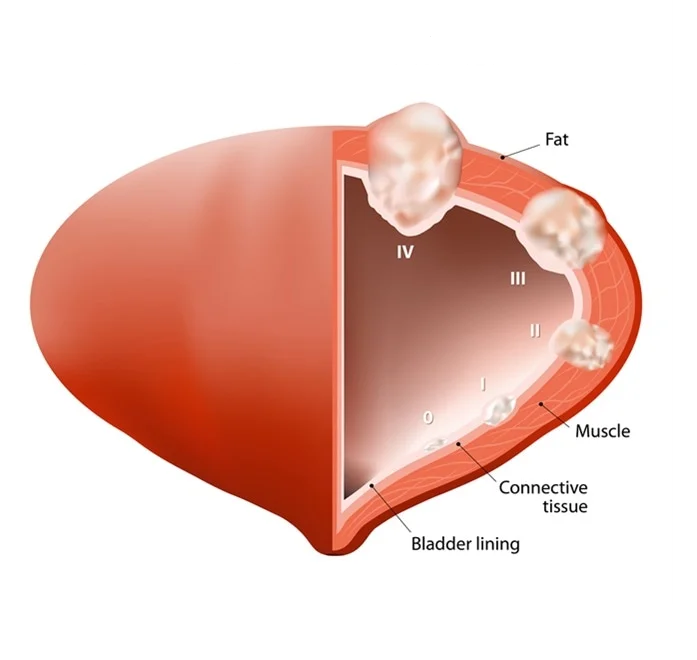Introduction
Bladder cancer happens when the urinary bladder's cells start to grow wildly. These cells are known as the urothelial cells that are inside the bladder. This soon leads to a tumor being formed. Some common symptoms include having to urinate a lot or it hurting when urinating. There may also be blood in the urine. There are 3 types of bladder cancer, which include urotherlial carcinoma (the most common), squamous cell carcinoma, and adenocarcinoma. There are many risk factors which can be seen here.
Mechanisms and genetic alterations
For bladder cancer, the most common mutated genes include: TP53, KMT2D, ARID1A, KDM6A, PIK3CA, TERT, RB1. Some of the most common gene copy number alterations include: CDKN2B, CDKN2A, MTAP, SDHC.
Current bladder cancer treatments
At stage 0 of bladder cancer, the cancer is only on the inner part of it and has not spread further throughout the bladder. At this stage, transurethral resection then intravesical therapy is done. Transurethral resection is usually done to test if someone does indeed have bladder cancer, and to see how far it has spread. Intravesical therapy is done with a liquid drug put in the urethra. At stage 1, transurethral resection is initially used. If the cancer is growing slow, intravesical therapy is done. If it is moving faster or the tumor is large, then cysectomy or radiation therapy is used. At stage 2 when the cancer has gotten to the muscle part of the bladder, transurethral resection is first used. Then, radical cystectomy is often used, which is the removal of the bladder. However for healthier patients, chemo is often used before surgery to shrink the cancer. At stage 3 and 4. chemo is often used. This can both kill cancer cells and shrink the cancer/tumor. (more detailed info).
New treatments in clinical trials

